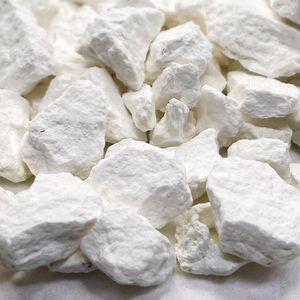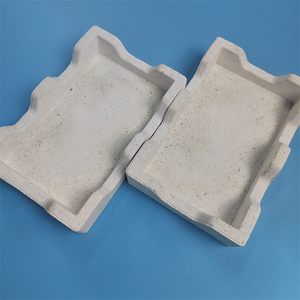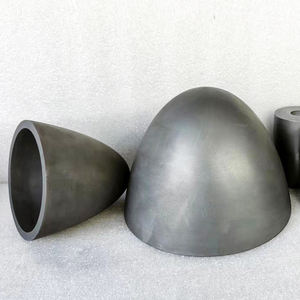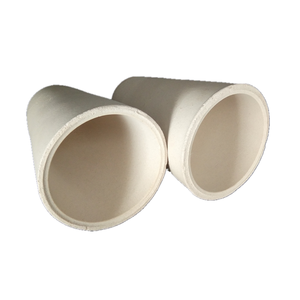Professional industry ceramic supplier, silicon nitride, silicon carbide, aluminum nitride and any other kinds of ceramics.
PRODUCT PARAMETERS
Description
Overview of Hot High-Temperature Resistance Fire Clay Castable Refractory Material Castable For Industrial KIln
Hot High-Temperature Resistance Fire Clay Castable Refractory Material Castable For Industrial KIln are non-metallic substances designed to withstand extreme temperatures exceeding 1,000°C, along with harsh chemical and physical stresses. They are essential for the inner linings of industrial furnaces, kilns, reactors, and incinerators, providing critical thermal insulation and structural integrity in processes ranging from metal and glass manufacturing to power generation.
Features of Hot High-Temperature Resistance Fire Clay Castable Refractory Material Castable For Industrial KIln
-
High-Temperature Resistance: Maintain structural strength and stability at temperatures often exceeding 1500°C.
-
Excellent Thermal Shock Resistance: Withstand rapid heating and cooling cycles without cracking or spalling.
-
Chemical Inertness: Resist corrosion and degradation from slags, molten metals, and acidic or basic environments.
-
High Mechanical Strength: Possess considerable load-bearing capacity at operating temperatures.
-
Low Thermal Conductivity: Provide effective insulation to improve energy efficiency and protect furnace structures.
-
Abrasion Resistance: Withstand erosion from solid materials and gas flows.
Specification of Hot High-Temperature Resistance Fire Clay Castable Refractory Material Castable For Industrial KIln
This fire clay castable refractory is a special mix. It handles very high heat well. You use it in industrial kilns. It’s made mainly from fire clay. It also contains special aggregates and binders. The mix is dry when you get it. You add water before using it. This makes it easy to put in place.
The big benefit is heat resistance. It works well over 1500 degrees Celsius. It keeps its strength even when hot. This strength is important. Kilns put pressure on the lining. The material won’t crack easily. It also lasts a long time. This saves money on repairs. It resists damage from hot gases and slag.
Installing it is simple. You mix it with clean water. The amount of water matters. Follow the instructions carefully. Mix it until it’s smooth and lump-free. Then pour or pump it into the formwork. You can shape it easily. It sets hard over time. Then it needs careful heating to dry completely. This step is crucial.
Use this castable for many kiln parts. It’s good for linings and repair patches. Use it for burner blocks too. It works in furnaces and incinerators. It’s a flexible solution. You often choose it over bricks. Castables fit complex shapes better. They also install faster. This means less downtime.
The material offers good insulation. It helps keep heat inside the kiln. This improves energy efficiency. Less heat escapes. That saves fuel costs. It also protects the kiln’s outer shell. This extends the whole structure’s life.
Applications of Hot High-Temperature Resistance Fire Clay Castable Refractory Material Castable For Industrial KIln
Industrial kilns need materials that handle extreme heat. Fire clay castable refractory material is designed for this. It withstands temperatures over 3000°F. This makes it perfect for tough industrial jobs. People install it in furnaces. It lines combustion chambers. It protects walls from intense flames. Boilers face harsh conditions too. This castable works well inside boilers. It shields surfaces from hot gases and erosion. It helps the boiler last longer. Incinerators burn waste at high temperatures. The fire clay castable is used there. It holds up against chemical attack from burning trash. It keeps the structure intact. Repairing kilns is common. Damaged areas need quick fixes. This castable can be poured or troweled into place. It sets fast. It bonds strongly to old refractory linings. Kiln linings take constant abuse. Fire clay castable forms durable linings. It resists spalling caused by rapid temperature changes. This reduces downtime for repairs. Foundries pour molten metal. Ladles and troughs need protection. Applying this material protects these parts. It prevents erosion from the liquid metal. Heat treatment furnaces require precise temperature control. A stable lining is key. This castable provides that stability. It minimizes heat loss. Cement kilns operate continuously. Their linings wear out. Fire clay castable offers a reliable repair option. It withstands the clinker abrasion. It handles the thermal cycling. This material is versatile. It suits many high-heat zones. Its installation is straightforward. Its performance is proven. It helps industries run kilns hotter and longer.
Company Profile
Tanki New Materials Co.Ltd. focus on the research and development, production and sales of ceramic products, serving the electronics, ceramics, chemical and other industries. Since its establishment in 2015, the company has been committed to providing customers with the best products and services, and has become a leader in the industry through continuous technological innovation and strict quality management.
Our products includes but not limited to Aerogel, Aluminum Nitride, Aluminum Oxide, Boron Carbide, Boron Nitride, Ceramic Crucible, Ceramic Fiber, Quartz Product, Refractory Material, Silicon Carbide, Silicon Nitride, ect. please feel free to contact us.

Payment Methods
T/T, Western Union, Paypal, Credit Card etc.
Shipment Methods
By air, by sea, by express, as customers request.
5 FAQs of Hot High-Temperature Resistance Fire Clay Castable Refractory Material Castable For Industrial KIln
This fire clay castable refractory handles very hot temperatures. It’s used in places like industrial kilns, furnaces, and boilers. People often ask these questions about it.
What is this fire clay castable exactly? It’s a special type of cement-like material. You mix it with water. Then you pour it or pump it into place. It hardens to form a strong, heat-resistant lining. It protects equipment from extreme heat.
How hot can it get? This material resists temperatures up to about 1500°C (2732°F). It stays stable and strong even at these high heats. It won’t melt or break down easily. This makes it good for very hot industrial processes.
How do you put it in place? First, prepare the surface. It needs to be clean and damp. Mix the dry powder with clean water. Follow the instructions for the right amount of water. Pour or pump the wet mix into the formwork or area. Use tools to shape it correctly. Make sure there are no air pockets trapped inside.
What about curing and drying? After placing it, the castable needs time to harden. This is called curing. Keep it moist for a day or two. Then, dry it slowly. Apply low heat first. Gradually increase the temperature over many hours. This drives out the moisture safely. Skipping this step can cause cracks or explosions later.
Where is it used? You find this material in many industrial heating areas. It lines kilns for firing ceramics or cement. It protects furnaces melting metal. It insulates boilers generating steam. Anywhere needing strong heat protection, this castable works well.
REQUEST A QUOTE
RELATED PRODUCTS

High Alumina Refractory High Strength High Alumina Castables High Quality High Alumina Refractory Castable

92%~99% Refractory Material Alumina Ceramic Ball

Refractory Raw Material High Alumina Bauxite Fine Powder for Refractory Brick Manufacturing

High Quality Factory Refractory Bricks Irregular Refractory Bricks Refractory Brick for Furnace

Industrial Refractory Ceramic Roller Cylinder Heat Resistance 99 Alumina Ceramic Rod



